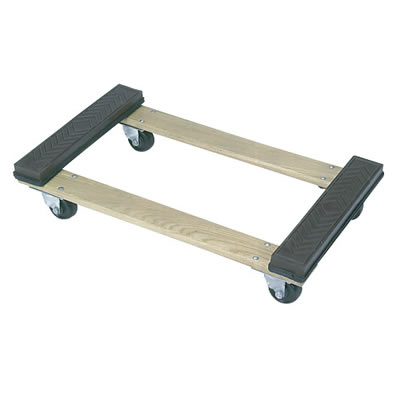 Furniture dollies are one of the simplest pieces of materials handling equipment you can own. They are basically just four wheels and a platform.
Furniture dollies are one of the simplest pieces of materials handling equipment you can own. They are basically just four wheels and a platform.
But there is more to choosing the right furniture dolly than meets the eye. First of all, you want to make sure the furniture dolly you buy is strong enough to carry the heaviest thing you are going to load onto it.
Quite simply: If you load something too heavy onto a furniture dolly that wasn’t designed to carry that weight, it’s going to break. Or it will at least be very difficult — or even potentially dangerous — to move. The last thing you want is to have a load that weighs hundreds, or even thousands, of pounds, to tip over in mid-movement.
Here, then, are the most important things to consider before you purchase a new furniture dolly.
Platform Material
Most furniture dollies feature platforms made out of wood. Specifically, they are wood 2X4s that are bolted together into a rectangular pattern.
The point of contact with the load is generally carpeted, or made of plastic or rubber. The type you need depends on what you will be using the furniture dolly for most of the time. If you are literally going to use it to move furniture, then you probably want a carpeted surface to help protect against scratches and scrapes.
But if you are actually going to use your furniture dolly to move equipment, heavy packages, or anything except furniture, you might want to opt for a rubber or plastic surface, which provides a better grip.
Caster Quality
The biggest difference between a high-quality furniture dolly and a cheaper one usually can be seen in the casters.
The best furniture dollies have top-quality casters that are engineered to support heavy loads without cracking, bending, or snapping off.
Low-quality furniture dollies, on the other hand, will have casters made from the cheapest possible material — probably plastic — that likely will prove unreliable when you need them the most.
Caster Attachments
Finally, you want to consider how the casters are attached to the furniture dolly itself. Are they bolted into place using thick, secure hardware? Or do they feature plastic poles that snap into place? Obviously, the former are likely to be more durable than the latter.
Even though it may cost you a little more upfront, purchasing a better quality furniture dolly can save you time, money, and headaches later on.
